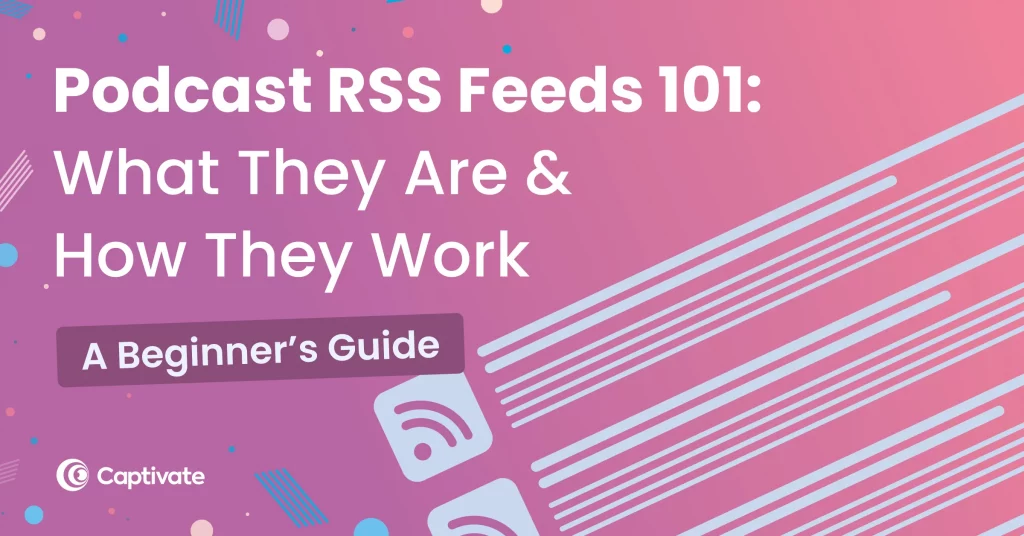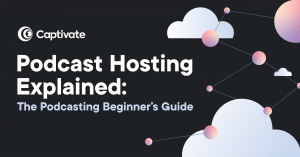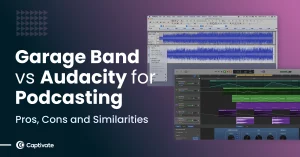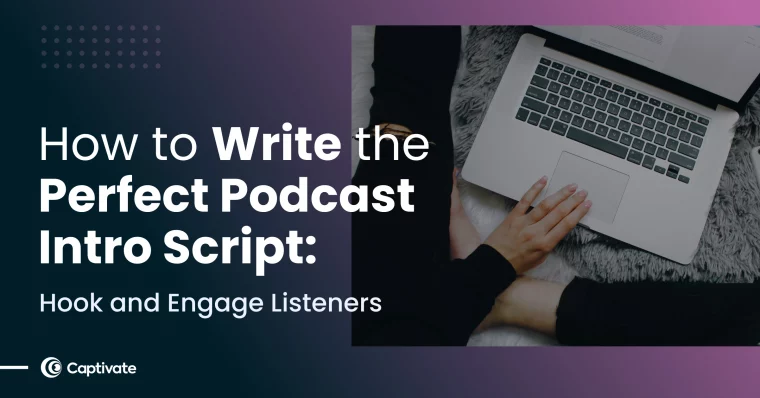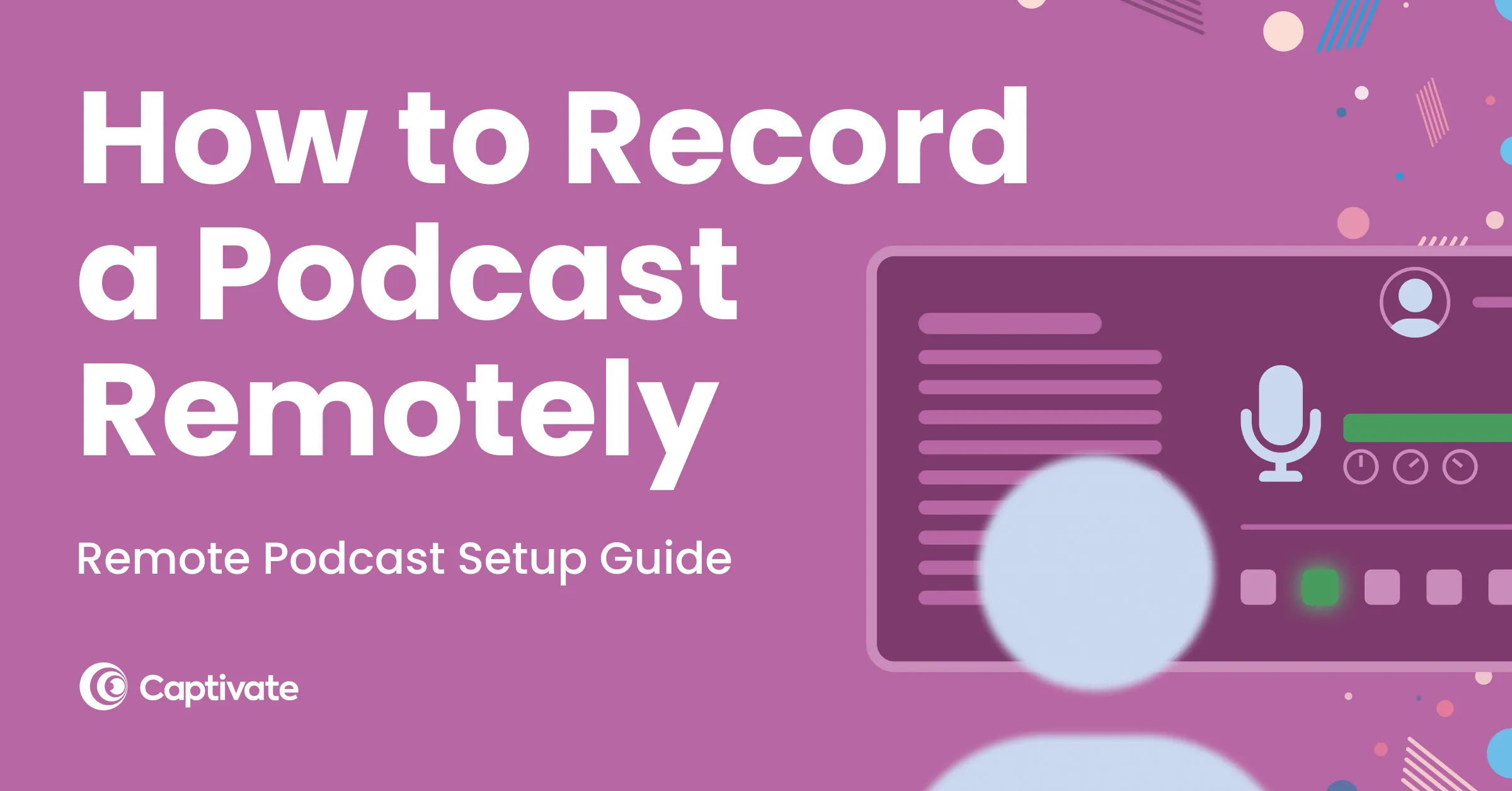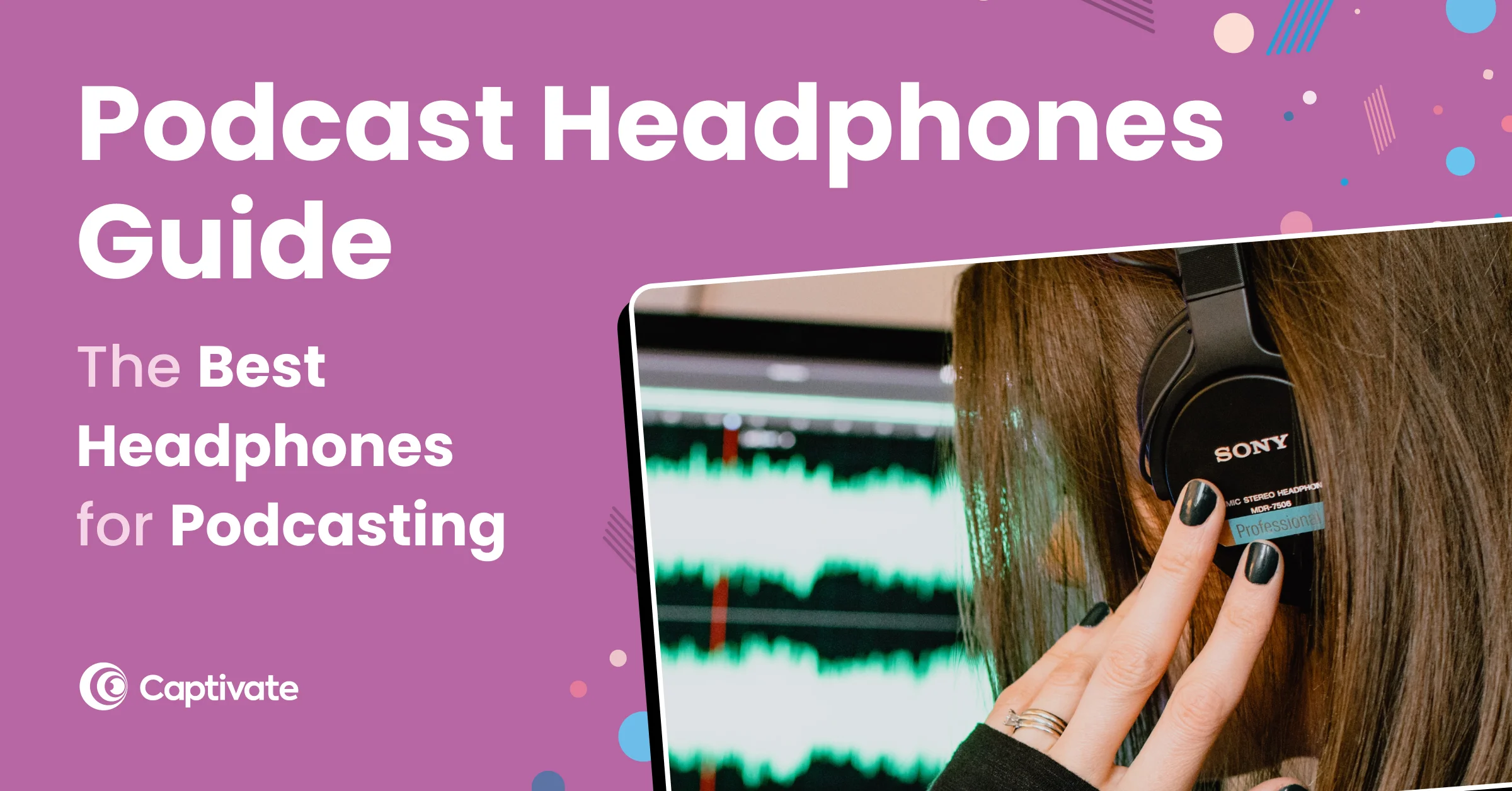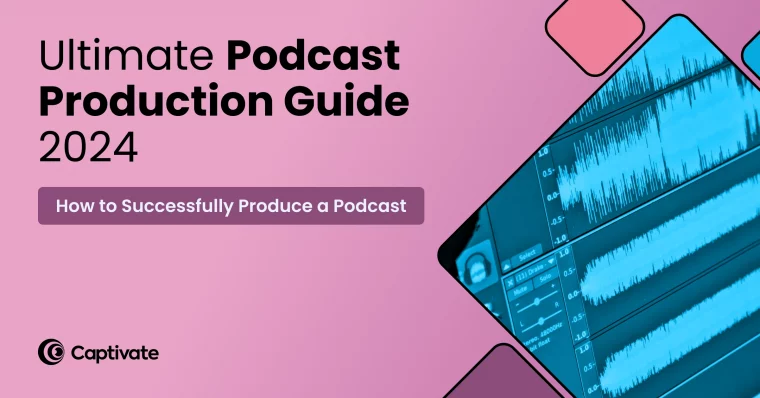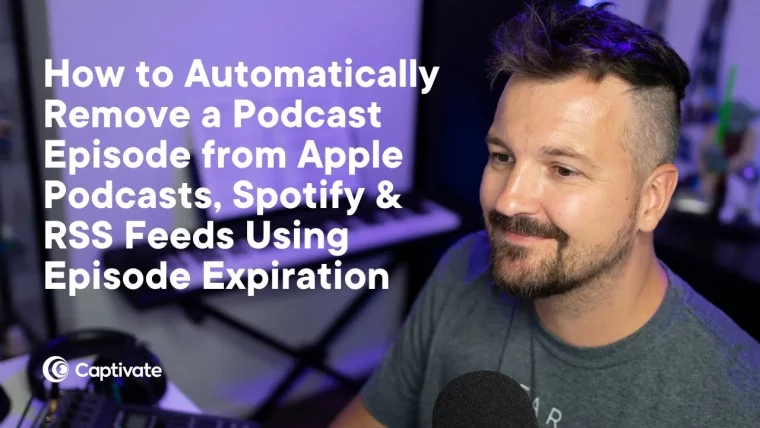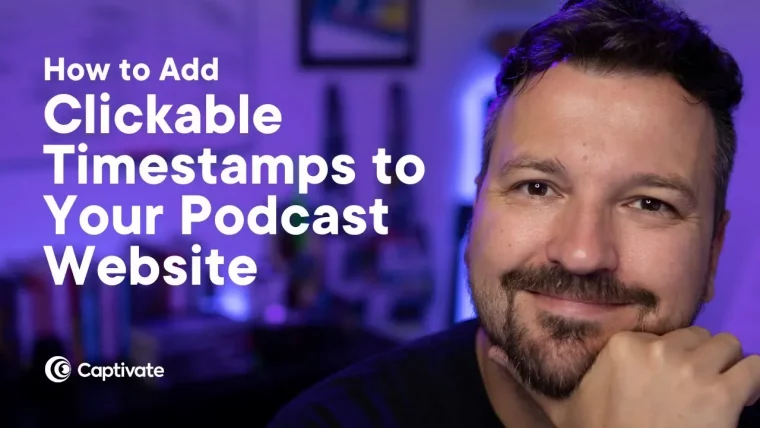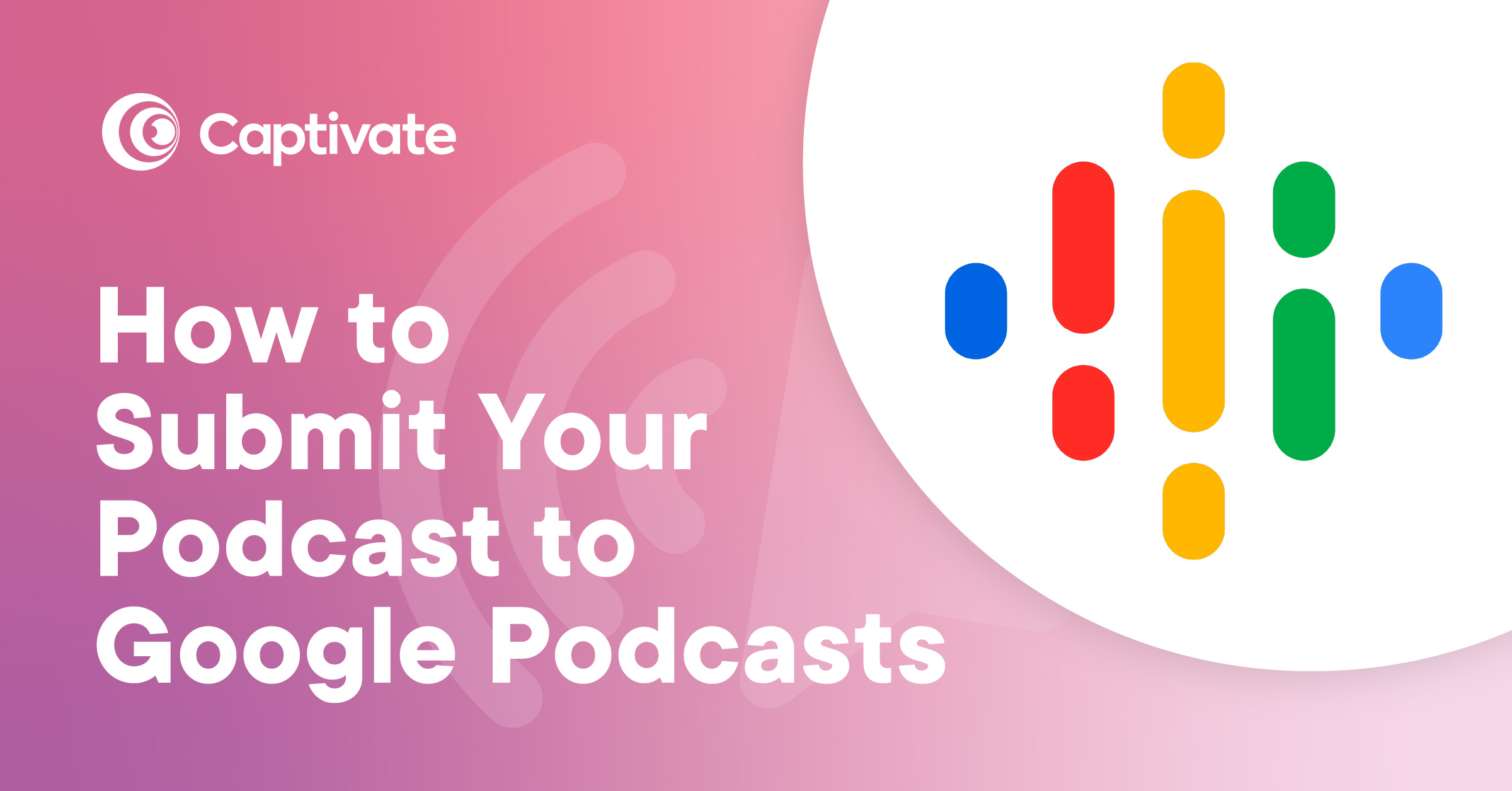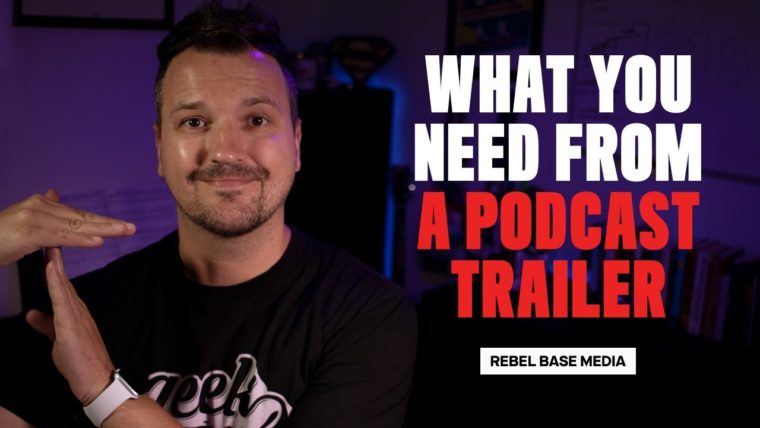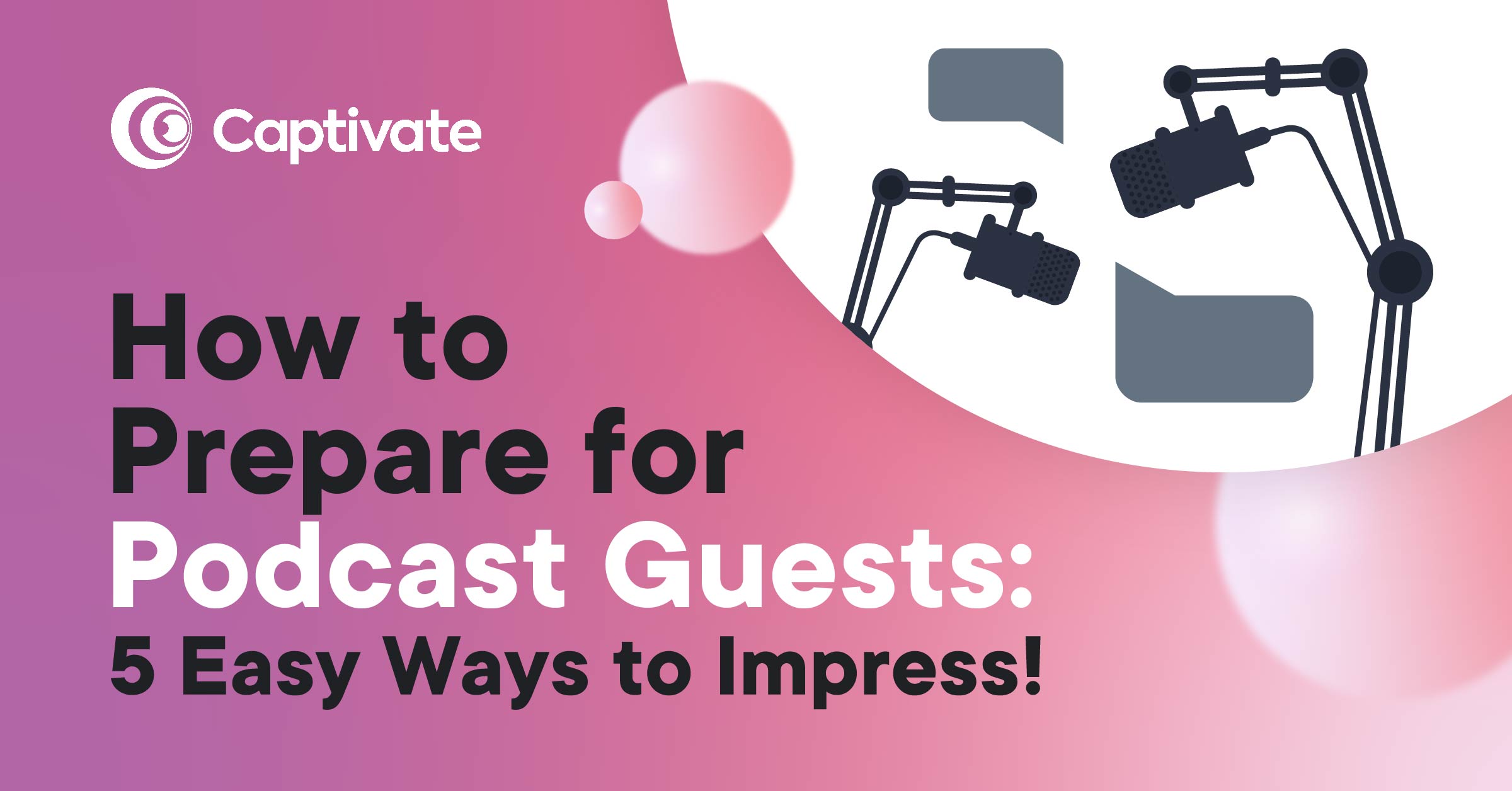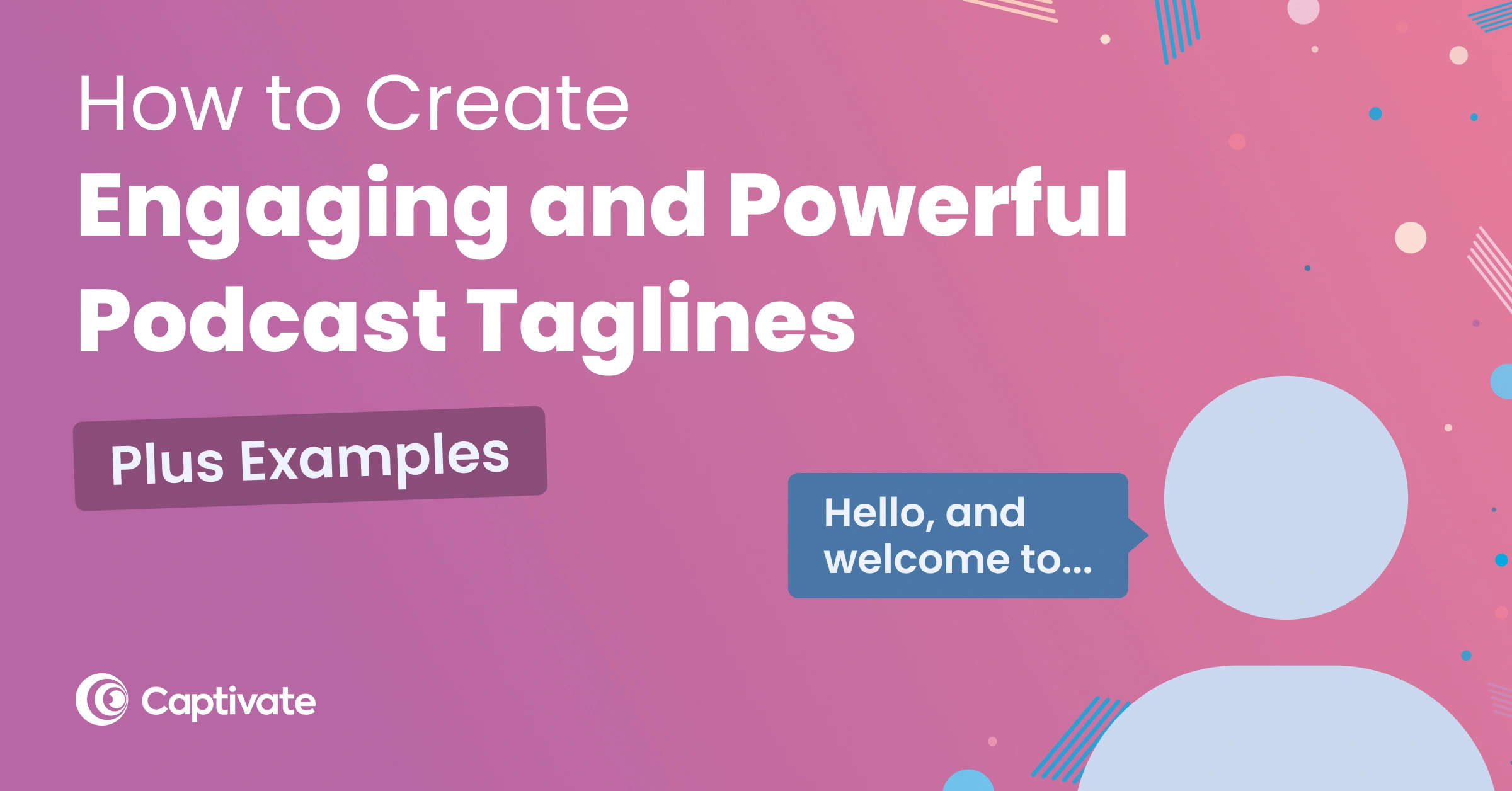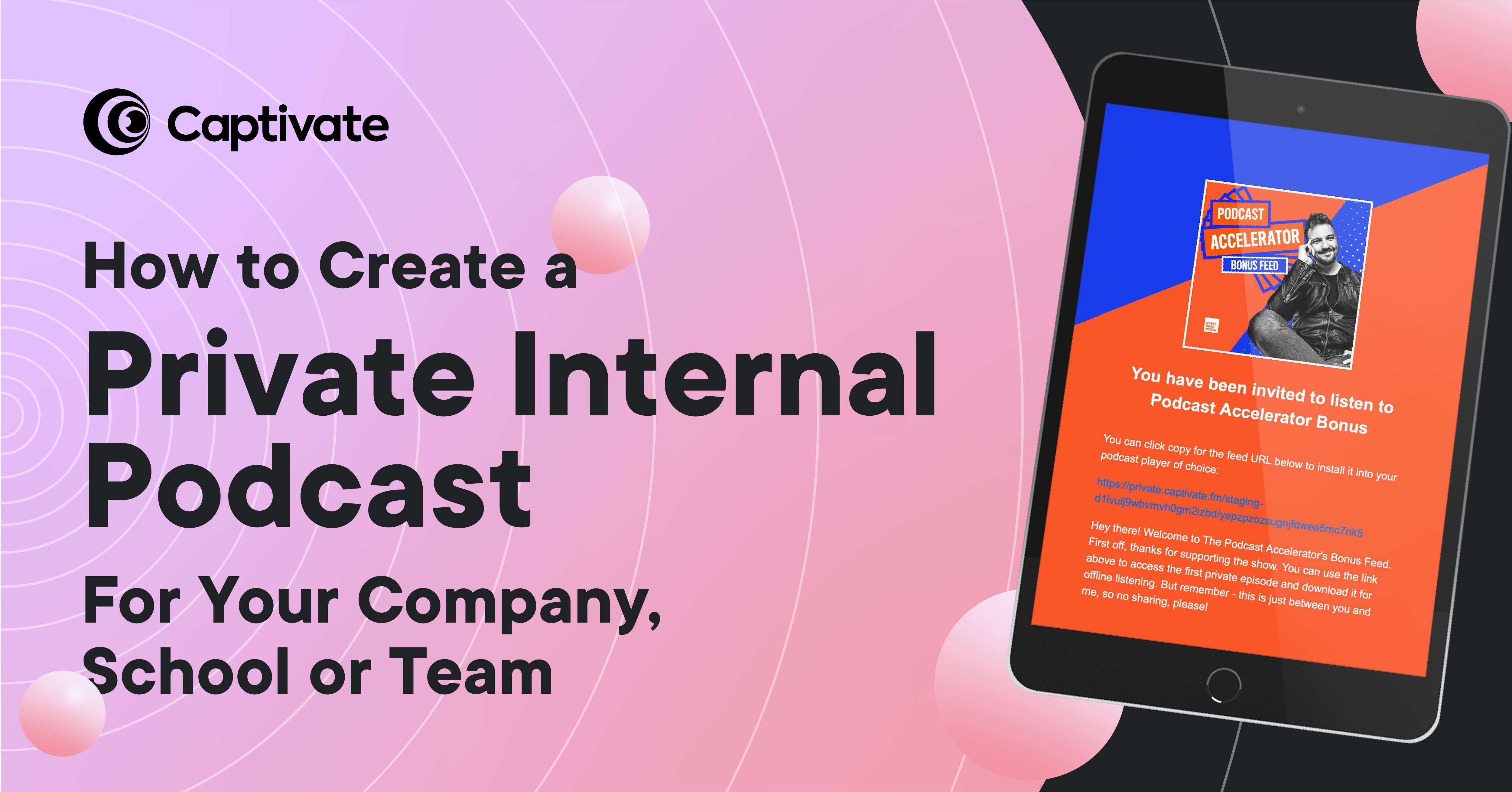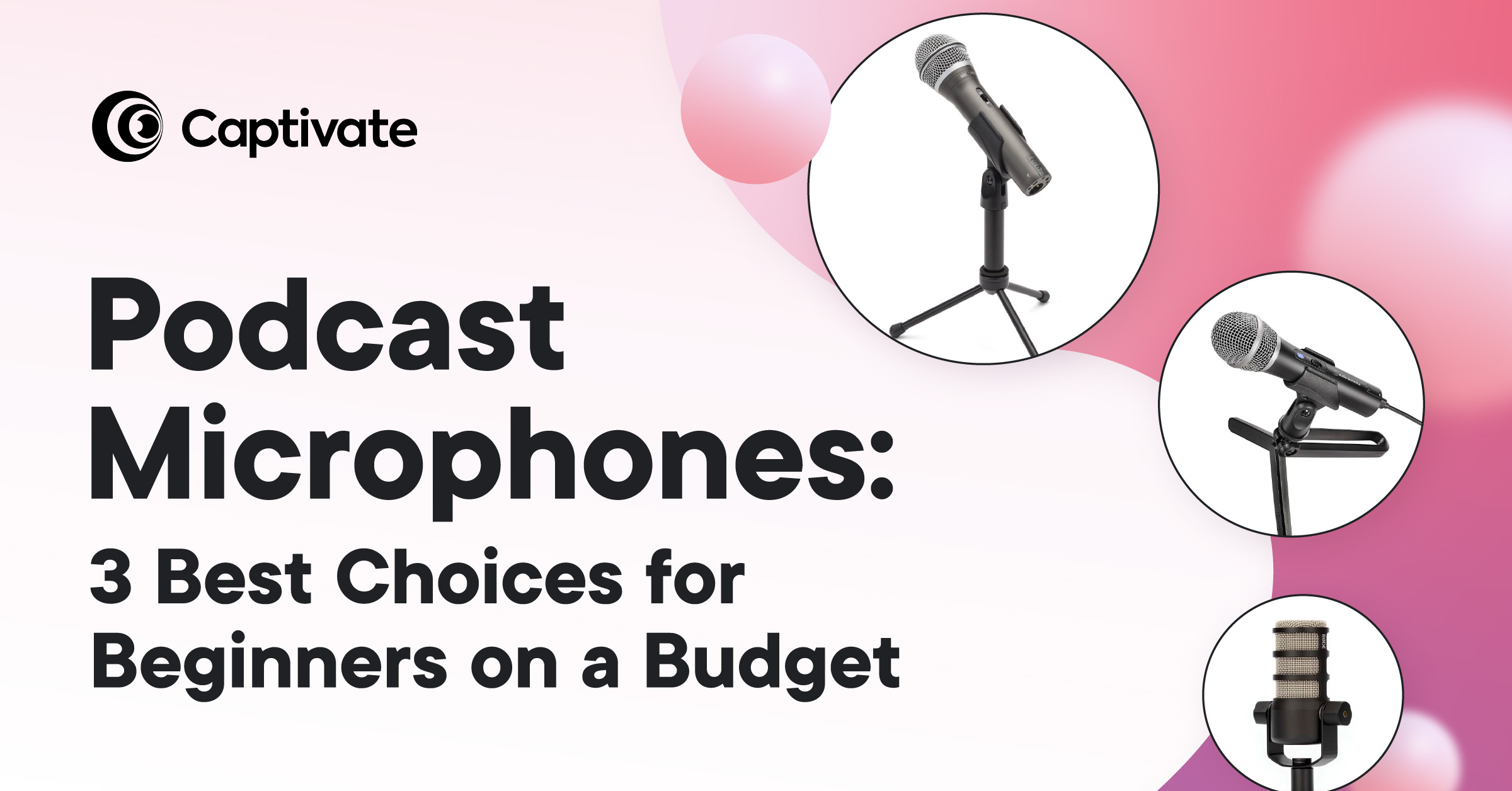The RSS feed is your podcast’s home, and it’s pretty integral to podcasting as a format. In fact, many podcast purists say a podcast isn’t a podcast unless it’s on RSS! It’s up to you whether you agree with that, but needless to say as a podcaster it’s best to understand what they are and how they work. This blog will explain everything you need to know when it comes to podcast RSS feeds, so let’s get stuck in!
In this article...
What are RSS feeds?
RSS stands for Really Simple Syndication, and in basic terms an RSS feed is a group of XML files which are automatically updated in real time. This allows sources from across a range of websites to be easily read in a single location.
This process is called aggregation – pulling content from a range of sources into a single location to make your life easier. RSS has been around since around 1999, and is a pretty fundamental part of website design.
It’s basically a link to a stream of content. You can have RSS feeds for a blog, website, podcast etc, and allows subscribers to view or listen to new content when it’s published, without the need to manually check the source website.
What are podcast RSS feeds?
In terms of podcasting, RSS allows you to upload your podcast details (so your art, podcast name, bio, etc.) and your new episodes to a single place – your host site – and for these episodes to then appear in multiple podcasting apps, like Spotify, Apple Podcasts and everywhere else.
Every hosting site, Captivate included, uses RSS feeds to submit your show to the places you want it to go so that listeners can find, download and listen to your episodes.
How podcast RSS feeds work
RSS feeds need to be added to an RSS feed reader or aggregator – for podcasters, these are directory apps like Apple and Spotify. Once added to the feed reader, it will check regularly for any updates, which is how your new episodes track through.
How to create a RSS feed for your podcast
Using a podcast host like Captivate means you don’t have to worry about creating an RSS feed – we do that for you, along with a whole suite of other things like ad insertion, monetization, analytics reports and much more. Check out our full list of podcasting features here.
For those curious about how you can manually create a podcast RSS feed, here’s how:
- Create a free account on RSS.com
- Upload your podcast details – that’s the name, cover art, RSS feed title, etc.
- Save and submit
The difference with doing it yourself is you’ll need to submit your feed to every directory individually, which as you can imagine won’t be a quick job. With Captivate, you save time. Head on over to Distribution in the platform and submit your show to multiple directories at the same time with a click of a button. So much easier!.
Again, for those curious of how to submit your RSS feed manually, below, we’ve used Spotify as an example.
How to add your RSS feed to Spotify
- Create a Spotify account (or log into your existing one)
- Go to Spotify for Podcasters, click “Get Started” and paste in your RSS feed
- Spotify will email you a code to verify your account
- Once verified, fill out podcast details like location, language, etc.
- Click submit, and you’re done
Doing this for each directory individually will be a bit time consuming, so we’d strongly recommend using a hosting provider like Captivate.
Key elements of a podcast RSS feed
Your RSS feed contains all the relevant information about your podcast so that directories can display it properly. You’ll upload some key aspects at show level, so if you’re using something like RSS.com you’ll do this during set up. This includes:
- Your show title
- Your show description
- Your author information
- Your podcast categories
- Your podcast cover art
You’ll then upload episode specific information each time you upload an episode. This includes things like:
- Episode details: title, description, duration, and release date
- Media enclosure: linking to the audio file
- Additional metadata: episode artwork, show notes, and transcripts
Again, if you use Captivate, you don’t have to worry about any of this – we take care of it all for you during your show and episode creation processes.
Podcast RSS feed requirements
If you’re creating your own RSS feed, you’ll need to follow some pretty specific requirements. If you’re using Captivate, don’t worry about this – we’ve got it sorted. Here’s what Apple has to say about RSS requirements:
“Your hosting provider should be able to help you address technical requirements. If the feed does not comply with these requirements, it will result in feed validation errors. RSS feeds can be self-generated and hosted, or can be issued via a hosting provider.
- RSS feed URLs must adhere to RSS 2.0 specifications, be publicly addressable (not password-protected), and include the following XML declaration:

- Display your show artwork and allow streaming playback of your episodes by enabling your hosting server for HTTP HEAD requests and byte-range requests.
- Each episode must have a unique <enclosure> tag, along with its three required components — URL, length, and type — which specify the location and host of the episode. Apple Podcasts will ignore duplicate <enclosure> URLs.
- All episodes must contain a globally unique identifier (GUID), which never changes.
- Use only ASCII filenames and URLs that include a-z, A-Z, or 0-9. For more information, see encoding best practices.
- Respect case-sensitivity across all XML tags in podcast RSS feeds.”
Podcast RSS feed example
Here’s how the podcast RSS feed looks for Captivate’s show, Captivate Insider. Click on it and take a look:
https://feeds.captivate.fm/insider/
Additionally here’s Apple’s example of a “well-formed RSS feed”, which is also worth a look.
Validating your podcast RSS feed
If you’re not with Captivate or another hosting provider, you’ll need to validate your RSS feed. Here’s what Apple says about the process:
“To validate your show, follow these steps:
- Within Podcasts, click the Add (+) button and select New Show.
- Select “Add existing show (RSS feed)” and enter the RSS feed URL.
- Select Add.
- Review your show information. Pay attention to the artwork and your show and episode metadata, such as title, author name, description, language, and category.
- If ready, select Submit For Review.
Review and fix any validation warnings or errors, if applicable. Then, select Submit For Review again. If your feed validates successfully, Apple Podcasts Connect will submit your show to Apple for review.”
You can also validate your feed using this tool.
Troubleshooting podcast RSS feed errors
After validation, you’ll see more information in the case that there were any errors with file formatting, connectivity or tagging.
Another article we think you'd like...
Reading Time: 6 minutes Starting a podcast or looking to switch podcast hosts in 2021? We break down exactly what a podcast host does, what to look for in podcast hosting platforms and how to find the best one for you.
If there are any errors, you can use something like Cast Feed Validator to get detailed insights into the problem and how you can fix it.
Do you need an RSS feed for your podcast?
Yes, you do need an RSS feed to podcast in the traditional sense. It’s absolutely essential in getting your show out there to directories like Apple, Spotify and more.
In recent years, though, podcasts have expanded onto YouTube – in the sense that a podcast is just on-demand audio, you don’t need an RSS feed to upload your podcast to YouTube. While some purists would argue the lack of RSS means that it isn’t a podcast, your average listener isn’t going to care about that one bit – they’re just interested in accessing your audio wherever they get their content.
Are RSS feeds free for your podcast?
Creating a podcast RSS feed manually is completely free. You also get an RSS feed when you create a podcast with Captivate, and the same is true for every other hosting provider. Your RSS feed is a truly fundamental part of your podcast, so it’s natural that whichever provider you choose will create one for you.
How Captivate manages your podcast RSS feed for you
What Captivate does is take all of the stress out of your podcast RSS for you – we create all the metadata from the information you put in when you create your show and upload your episodes and make sure it’s formatted correctly and there are no issues. There’s no need to worry about all the technical stuff, you can just focus on growing and monetizing your podcast.
Takeaway
RSS has been fundamental to podcasting since it began – it’s a super handy way of distributing information to multiple locations after it’s been uploaded to one central place. You can create and manage your own RSS feed, distributing data to all directories yourself, or any hosting site you use will do this for you.
If you’re creating and managing your own RSS feed, you need to ensure that it meets the technical requirements outlined above, and that it’s validated using the tools provided. If you’re with Captivate, you don’t need to worry about any of that – we’ve got you covered.

